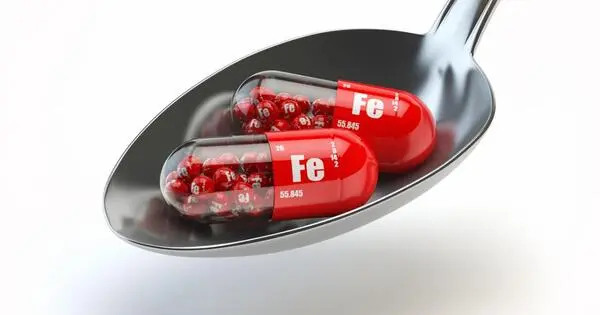Iron poisoning, also known as iron toxicity or iron overdose, happens when the body has an excess of iron. It is usually caused by ingesting too much iron, which causes acute toxicity. Mild symptoms such as vomiting, diarrhea, abdominal pain, and tiredness appear within hours. Tachypnea, low blood pressure, convulsions, or coma may occur in more severe cases. Iron poisoning, if left untreated, can result in multi-organ failure, permanent organ damage, or death.
Iron is a mineral that is required for several physiological activities, including oxygen transfer and energy synthesis. When the body accumulates too much iron, it can cause toxicity, which can lead to major health concerns.
Causes
Iron poisoning can occur as a result of inadvertently ingesting iron supplements, particularly in children who may mistake iron pills for chocolates. It can also occur in circumstances of deliberate overdose, such as suicide attempts. Furthermore, certain medical diseases, such as hemochromatosis (a genetic ailment in which the body absorbs too much iron) or recurrent blood transfusions, can contribute to iron overload.
Iron is often used in the treatment of anemias and is available over the counter as a single entity supplement in the form of iron salts or in conjunction with vitamin supplements. Iron overdoses are classified as either unintentional ingestion, which is more common in youngsters, or purposeful consumption, which is more common in adults attempting suicide.
Symptoms of iron poisoning may include:
- Nausea and vomiting: Early symptoms often involve gastrointestinal distress.
- Abdominal pain: Severe abdominal pain may occur as a result of damage to the gastrointestinal tract.
- Diarrhea or constipation: Gastrointestinal symptoms can manifest as diarrhea or constipation.
- Lethargy and weakness: Excessive iron can affect energy levels and cause fatigue.
- Pale or bluish skin color: Iron poisoning can lead to changes in skin color due to reduced oxygen transport.
- Seizures: In severe cases, iron toxicity can lead to seizures.
- Organ failure: Prolonged exposure to high levels of iron can damage organs such as the liver, heart, and kidneys, potentially leading to organ failure.
Diagnosis
Iron poisoning is diagnosed based on clinical presentation, which includes laboratory tests for serum iron concentrations and metabolic acidosis, as well as a physical examination. Treatment for iron poisoning includes fluid replenishment, gastrointestinal cleansing, intravenous administration of deferoxamine, liver transplants, and close monitoring of the patient’s status. The level of intervention required is determined by whether the patient is at risk of severe toxicity.
If iron poisoning is suspected, get medical assistance as soon as possible. Treatment may include techniques such as forced vomiting, gastric lavage (stomach pumping), or the administration of medicines that can bind to iron and promote its evacuation.
Prevention
Iron poisoning can be avoided by taking precautions. Iron supplements and pharmaceuticals should be kept out of the reach of children, and child-resistant packaging should be used. If you are concerned about your iron levels or have a medical condition that could lead to iron overload, visit a healthcare expert for proper monitoring and management.
















